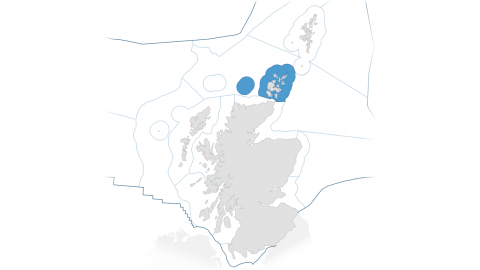The tables in this section reflect the output of the workshop (October 2019) when the pressures from human activities were assessed for the period 2014 to 2018 for the region. The summary text below the tables elaborates on some of the points that were made at the workshop.
This pressure assessment uses the FeAST classification which includes two abrasion pressures: surface abrasion & sub-surface abrasion. Some expert groups combined these as a single pressure "surface & sub-surface abrasion" whilst others focussed on using surface abrasion alone, hence there is a slight difference in handling for some regions.
The ranking of the pressures in terms of impact is a relative exercise within each region, and is not a statement of their absolute impact. Detailed comparison between regions on the basis of these relative pressure assessments is therefore not advisable.

Main pressures identified
| Priority [1] | Pressure (FeAST classification) [2] | Main healthy and biologically diverse components affected [3] | Main contributing FeAST activity /activities to pressure [4] | Associated productive assessments [5] |
|---|---|---|---|---|
| 1 | Removal of target species (including lethal) |
|
||
| 2 | Organic enrichment |
|
||
| 3 | Sub-surface abrasion/penetration |
|
||
| 3 | Surface abrasion |
|
||
| 5 | Removal of non-target species (including lethal) |
|
Other pressures identified
Footnote: the ordering of entries is alphabetical and there is no prioritisation between the pressures.
Summary from workshop
Pressures on the marine environment of Orkney are considered low relative to other Scottish Marine Regions. In this context, removal of target shellfish and fish species by inshore fisheries is identified as the most important pressure, but this does not imply fishing beyond biological limits. Faeces and waste food from salmon aquaculture is the main (and increasing) source of organic enrichment, but agricultural run-off can occur at a local scale and is intense where it occurs. A small scallop dredge fishery exists in the region, accounting for sub-surface abrasion and penetration of shallow subtidal sediments. Surface abrasion is likely to occur through weather-related dragging of traps and ropes from creeling and potting activity which widespread but at low intensity in the region. Creeling and potting may also affect non-target species through ghost fishing of lost gear and risk of entanglement in ropes.

